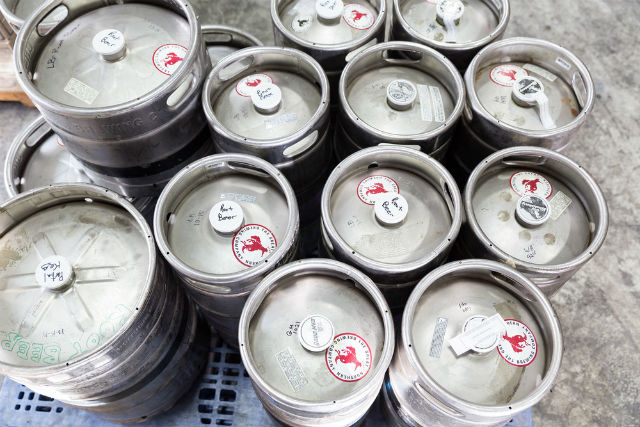
As your brewery’s chain of command grows, handing information down from person to person is not effective and the “telephone game” could end up happening, which could lead to a disaster.
Merritt Waldron, the Quality Control Specialist for Rising Tide Brewing spoke at the 2018 Craft Brewers Conference and touched on aspects that growing breweries need to address as staff increases and quality control needs to be addressed.
The seven-year-old Portland, Maine brewery has three ‘QC Commandments:’
- Safety: It means checks for food, should a brewery be a brewpub along with safety checks for employees. Rising Tide is checked by a OSHA-trained operator. “Safety, meaning what will be safe for the consumer and we need to do anything possible to limit a physical hazard, choking hazard or exploding bottles or kegs for employees,” Waldron said. He noted little things, like the need for a brewer to use pH meter to check for residual caustic in rinse water after a brew session.
- Quality Experience: “You want to provide a quality experience for your brand,” Waldron said, adding that starts with a clean brew day all the way through quality checks until packaging, be that in cans, bottles or kegs.
- Consistency: Waldron noted that breweries need to be measuring as many things as they can and tracking them to know proper boundaries.
To achieve those goals, making a QC manual for your brewery is essential as it grows past the original brew team of 1 or 2 employees in the production.
It starts with a QC policy.
“Make a goal, such as ‘making world class beer,’ Waldron said. “State how to achieve it, using best practices. Set expectations: having an optimal experience and make sure we are continuously improving.”
Make your handbook a living document, it will always able to be changed to improve things.
Having a list of governing importance: have a chart of who is in charge of what in your brewery, with someone at the top as a quality control person, someone who is making all the decisions,a and then have a chain of command follow.
A master sanitation schedule is vital as well. It can include a ‘who, what, where and how’ on SOPs and how to achieve it.
“Have a plan for what every brewer has to do and how they have to follow it,” Waldron said. “The brewhouse, cellaring, packaging. Know the list of general cleaning, plus a deeper caustic clean weekly.”
Waldron started from the beginning of the brewing process, including a check of the water to make sure its clean and drinkable.
An example from his brewery showed where there was a water main break and they ended up with dirty, mucky water coming out of the pipes that day.
“Had we been brewing that day, we may have not caught that and it would have ruined a batch of beer that day. You don’t want that,” he said.
He added the manual should show what happens when a CIP fails.
Have a verification log for each tank. That includes a visual inspection, a pH test to check for caustic, and a ATP swab on problem areas. Also, include what has to be done and who has to do it if there is a failed cleaning.
“A clean brewery will lead to nice, delicious beer at the end,” Waldron pointed out.







Be the first to comment